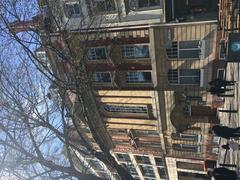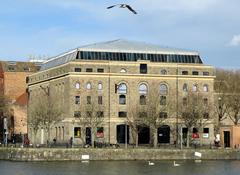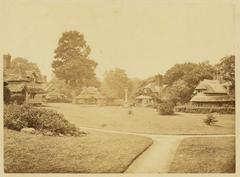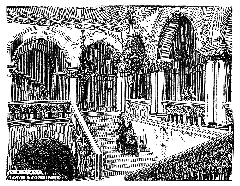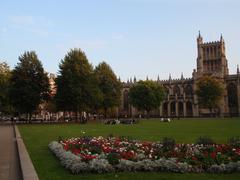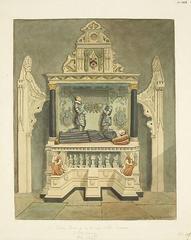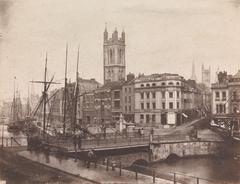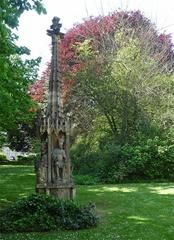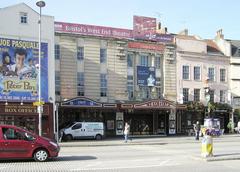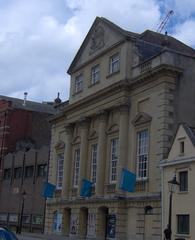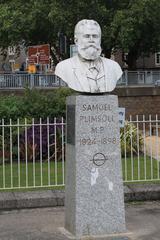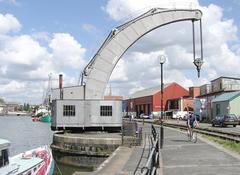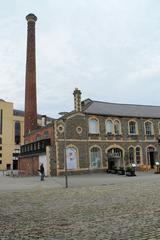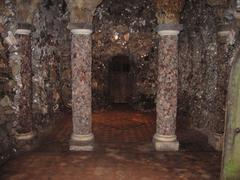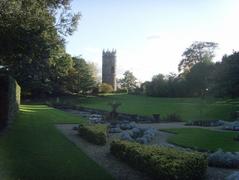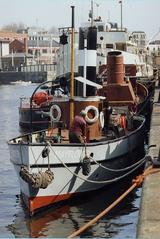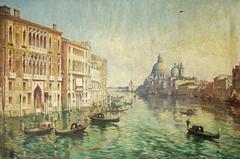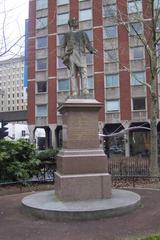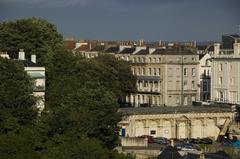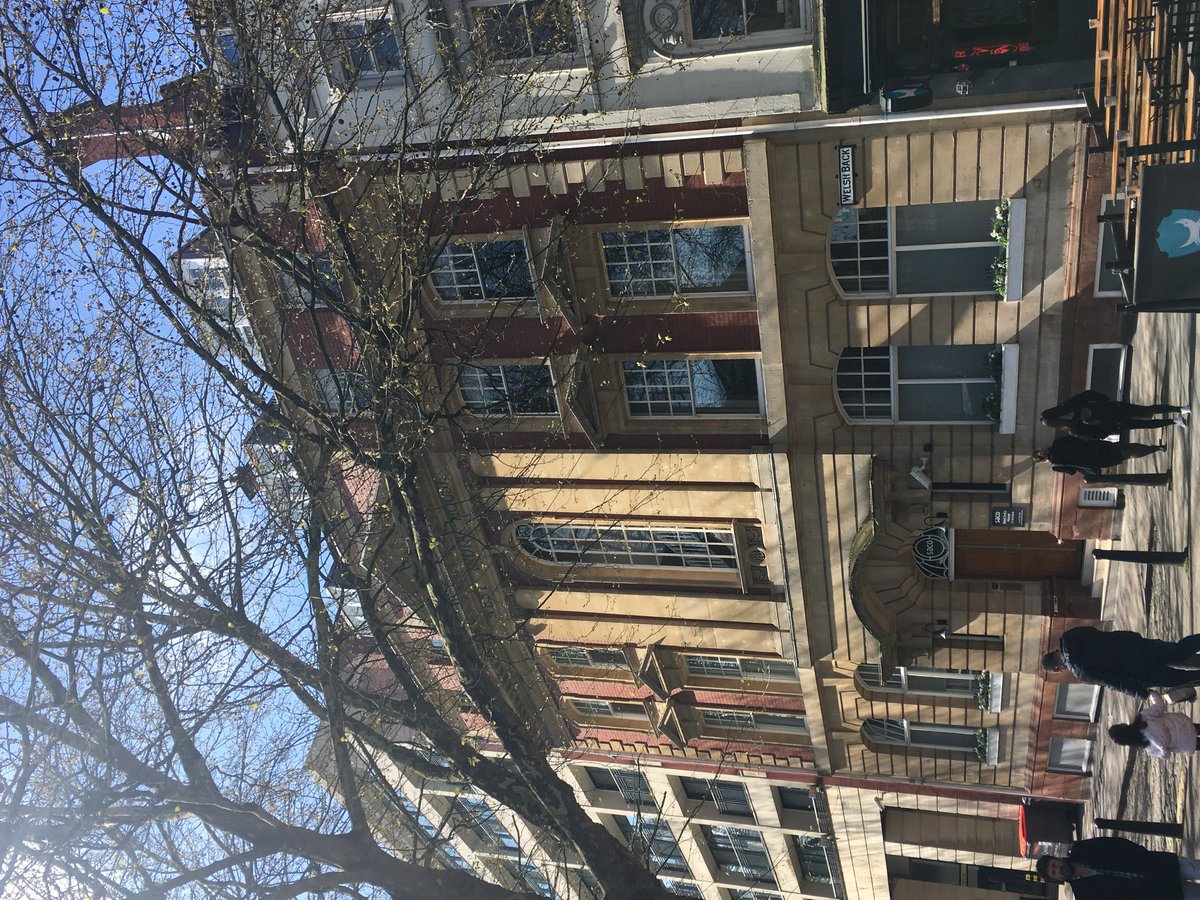
West India House Bristol: Visiting Hours, Tickets, and Historical Guide
Date: 14/06/2025
Introduction
West India House, an iconic Georgian-era landmark in Bristol’s historic core, stands as a powerful reminder of the city’s maritime prosperity and its complex relationship with the transatlantic trade. Built between 1804 and 1809 as the headquarters for the West India Dock Company, the building’s elegant neoclassical design and strategic location near the Floating Harbour reflect Bristol’s ambitions during a formative period of its history (Bristol Archives, Visit Bristol). Today, West India House serves not only as a visual testament to Bristol’s past but also as a site of reflection on the legacies of commerce, urban development, and social justice.
This guide provides a comprehensive overview of West India House’s historical significance, architectural features, practical visitor information—including visiting hours, tickets, accessibility, and guided tours—as well as insights into its role in Bristol’s cultural landscape.
Historical Background
Origins and Construction
Commissioned by the West India Dock Company and constructed from 1804 to 1809, West India House was designed by architect Charles Busby. The building features a grand, symmetrical façade of Bath stone, with classical proportions and restrained neoclassical ornamentation. Its central location on King Street, adjacent to the Floating Harbour and River Avon, underlined its importance as a commercial hub during Bristol’s rise as a trading port (Historic England, Visit Bristol).
Economic and Social Context
The West India Dock Company played a pivotal role in managing and profiting from trade between Britain and the West Indies. Commodities such as sugar, rum, and tobacco—produced by enslaved labor—were imported, generating significant wealth for Bristol’s merchants. The wealth from this trade funded public works and grand buildings, including West India House itself. However, this prosperity was inextricably linked to the exploitation and suffering caused by the transatlantic slave trade (M Shed Museum, Georgian House Museum).
Architectural Features and Innovations
West India House exemplifies late Georgian commercial architecture, characterized by:
- Symmetrical Bath stone façade with prominent cornice and classical detailing.
- Five-bay structure with tall sash windows admitting abundant natural light.
- Fireproofing innovations such as brick vaulting and iron beams to reduce fire risk.
- Grand internal spaces including a central staircase and original office suites designed for administrative efficiency (Bristol Archives).
Later History and Adaptive Reuse
After the abolition of the slave trade in 1807 and the decline of West Indies commerce, West India House transitioned to serve various commercial uses—offices, hotel, and event spaces. Its Grade I listed status ensures preservation of its historic fabric while allowing for contemporary adaptive reuse (Historic England).
Cultural and Heritage Significance
Today, West India House is a focal point for heritage walks, educational programs, and community discussions about Bristol’s history. The building’s story is featured in local museums and is central to public engagement with the city’s legacy of trade, migration, and social change (M Shed Museum).
Visiting West India House: Practical Information
Visiting Hours
- General Access: The building is primarily an office space and is not open for daily public tours.
- Special Events: Interior access is offered during heritage events such as the Bristol Open Doors Festival (usually mid-September).
- Exterior Viewing: The façade can be admired year-round from King Street and the Floating Harbour.
Check the Visit Bristol events calendar and Bristol Open Doors for up-to-date information on public access opportunities.
Tickets and Admission
- Exterior Viewing: Free, no tickets required.
- Special Events/Guided Tours: Entry is typically free during events but may require advance booking due to limited capacity.
Accessibility
- Surrounding Area: Pedestrian-friendly with level access and ramps.
- Interior: Accessibility may be limited during events due to the historic fabric of the building. Contact event organizers for specific arrangements.
Guided Tours and Educational Programs
- West India House features in several guided walking tours, including the Bristol Transatlantic Slavery Walk (Bristol Transatlantic Slavery Walk).
- Interpretive signage and educational resources are available at nearby museums such as M Shed.
- School and community programs can be booked via local heritage organizations.
Nearby Attractions and Amenities
- King Street: Home to Bristol Old Vic theatre, historic pubs, and restaurants.
- Bristol Floating Harbour: Offers scenic walks and access to attractions like SS Great Britain.
- St Nicholas Market: A bustling indoor market with food stalls and independent shops.
- M Shed Museum: Exhibits on Bristol’s social and maritime history.
Public toilets, cafés, and the Bristol Tourist Information Centre are all within walking distance.
Visuals and Interactive Elements
- Digital Resources: Access historic maps, photographs, and archival materials via Know Your Place Bristol.
- Suggested Images:
- West India House façade on King Street
- Historic map of the West India Dock Company area
- Interior Georgian features (special events only)
Frequently Asked Questions (FAQs)
Q: Can I tour inside West India House?
A: Interior access is available only during special events such as the Bristol Open Doors Festival. Otherwise, the building is not open for public tours.
Q: Is there an admission fee?
A: Exterior viewing is free. Special events and tours may require advance booking but are typically free.
Q: Is West India House accessible to visitors with disabilities?
A: The surrounding area is accessible; interior accessibility may be limited—check with event organizers for details.
Q: Are guided tours available?
A: Yes, during special events and through walking tours such as the Bristol Transatlantic Slavery Walk.
Q: What else can I visit nearby?
A: Explore the M Shed Museum, Bristol Old Vic, St Nicholas Market, Bristol Floating Harbour, and numerous historic pubs and restaurants.
Q: Are digital or virtual tours available?
A: Yes, Know Your Place Bristol and local museums offer digital archives and virtual experiences.
Key Dates and Milestones
- 1804–1809: Construction of West India House by Charles Busby.
- 1807: Abolition of the British transatlantic slave trade.
- Mid-19th century: Transition to wider commercial uses as the West Indies trade declined.
- 20th century: Adaptive reuse for offices, hotel, and events.
- Present day: Recognized as a Grade I listed heritage site, central to public history initiatives (Bristol Archives).
Cultural and Social Context
West India House is a site for critical engagement with Bristol’s history. Educational initiatives and interpretive events encourage visitors to consider the legacies of the slave economy and the city’s ongoing efforts toward historical justice (M Shed Museum). Community-led heritage walks and public discussions are regular features, fostering dialogue about migration, identity, and the city’s evolving narrative (Visit Bristol).
Visitor Experience and Responsible Tourism
- Photography: Exterior photography is permitted at all times; interior photography only during special events.
- Responsible Tourism: Visitors are encouraged to approach the site with respect, mindful of its layered histories and the broader context of Bristol’s heritage.
Summary and Travel Tips
West India House is a compelling destination for anyone interested in Georgian architecture, maritime history, or the legacies of transatlantic trade. While interior access is limited, its prominent location makes it easy to incorporate into a self-guided or organized heritage walk. To enhance your visit:
- Plan your trip around special events like the Bristol Open Doors Festival for a chance to see inside.
- Use digital resources and museum exhibitions to deepen your understanding.
- Explore the lively King Street area for dining, theatre, and cultural experiences.
Sources and Official Links
- Bristol Archives, Buildings Source Guide
- Visit Bristol – History and Heritage Attractions
- Georgian House Museum
- M Shed Museum
- Historic England – West India House Listing
- Bristol Open Doors Festival
- Know Your Place Bristol Digital Platform
- Visit Bristol Events Calendar
For further resources, download the Audiala app for audio tours and personalized travel guides. Explore related posts for more on Bristol’s historic sites, and follow local museums and tourism organizations for the latest updates.
